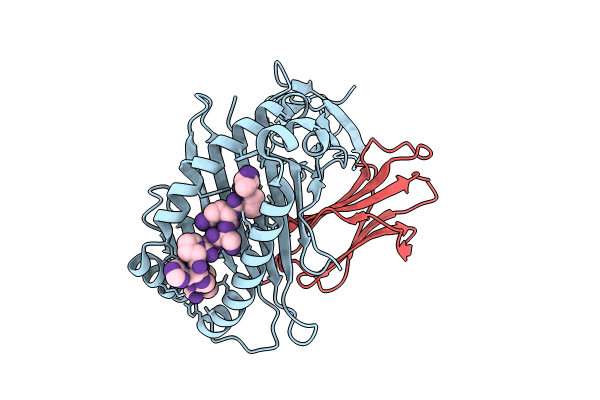
Deposition Date
2022-12-20
Release Date
2023-12-20
Last Version Date
2025-01-01
Entry Detail
PDB ID:
8HSW
Keywords:
Title:
CRYSTAL STRUCTURE OF BAT MHC CLASS I MYLU-B-67 FOR 2.1 ANGSTROM
Biological Source:
Source Organism:
Myotis lucifugus (Taxon ID: 59463)
Pteropus alecto (Taxon ID: 9402)
Severe acute respiratory syndrome coronavirus 2 (Taxon ID: 2697049)
Pteropus alecto (Taxon ID: 9402)
Severe acute respiratory syndrome coronavirus 2 (Taxon ID: 2697049)
Host Organism:
Method Details:
Experimental Method:
Resolution:
2.03 Å
R-Value Free:
0.26
R-Value Work:
0.23
R-Value Observed:
0.23
Space Group:
C 2 2 21


